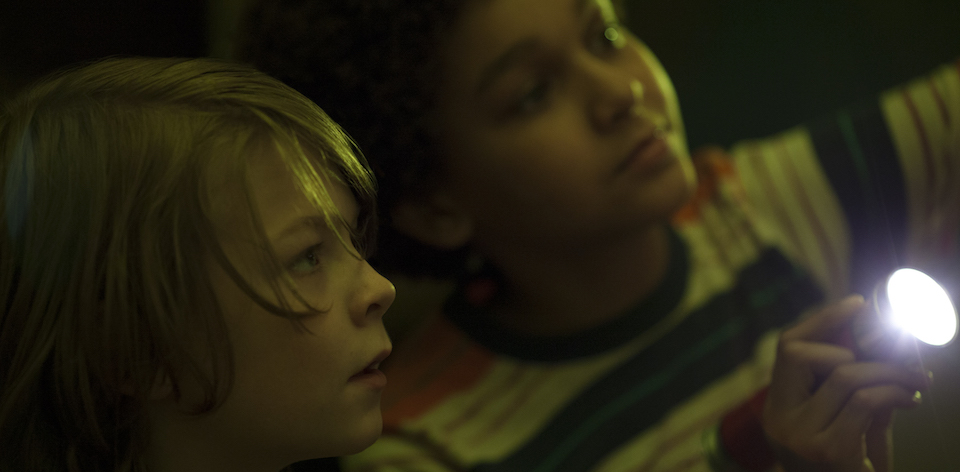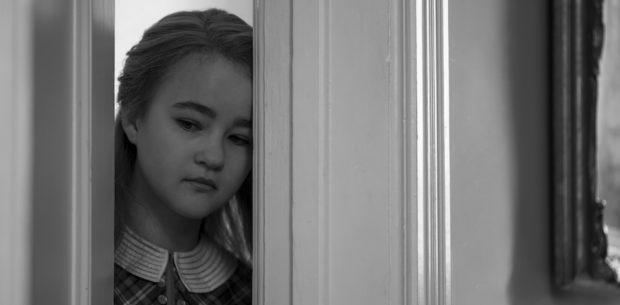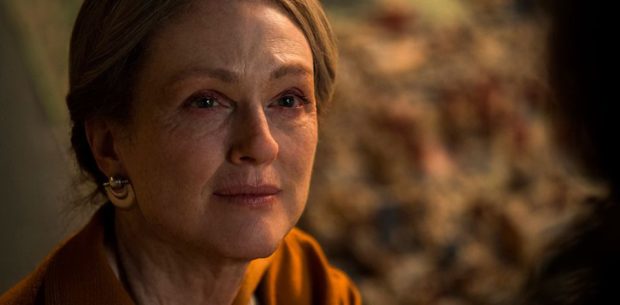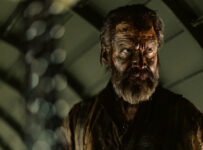The work of Brian Selznick has been translated to screen before, a seemingly perfect union of cinema’s history and modern visual panache in Martin Scorsese’s Hugo. With WONDERSTRUCK, based on the illustrated novel of the same name, unlikely interpreter Todd Haynes pays spectacular tribute to silent cinema.
Those familiar with Selznick’s books will know that his narratives blend his gorgeous artwork with the written word. Selznick’s screenplay follows suit by allowing the visuals to lead the story of Ben (Oakes Fegley), a boy in 1977 who searches for his estranged father after the double-punch of losing his mother and his hearing. In 1927, the similarly deaf Rose (Millicent Simmonds) who also runs away from home in order to find idol Lillian Mayhew (Julianne Moore). The wondrous contents of the American Museum of Natural History hold clues to how both of their lives may be connected.
It’s very easy to get swept away in WONDERSTRUCK, one of the few films in recent memory to fully realise the capacity of a largely visual medium. It’s not just Edward Lachman’s gorgeous cinematography either, alternating between the crisp black and white of the 1920s and the gritty sweat and grime of the summer of 1977 either. Haynes trusts Selznick’s instincts by adopting the ‘show don’t tell’ approach, painstakingly recreating period detail in both settings.
Entire slabs of backstory are told in the rapid cuts of inserts, newspaper clippings, and dream sequences. At other times, the enormity of New York or the hidden treasures of the museum are visualised as if glimpsed through the eyes of two deaf children, with everything exaggerated and oversized. As the film reaches its denouement, Selznick and Haynes play out the story through a series of dioramas and rudimentary animation. It’s not a stylistic choice so much as an entirely visual world.
The casting of deaf actor Millicent Simmonds in the crucial role of Rose could have been a risk, especially given that this was her screen debut. Yet with this film she marks her arrival, reminding audiences that a naturally talented actor can do more with an expressive glance than an amateur can with a monologue. The more experienced Fegley (Pete’s Dragon) reliably guides his character to the finish line, conveying his perpetual frustration at a world who is blind to his deafness.
Carter Burwell’s swelling score is ever-present as another actor on the soundtrack, filling in the absence of voices during pointed periods of heightened emotion. What would be overwhelming and intrusive on another film is perfectly in step with the silent movies and old world cinema that Selznick and Haynes have repeatedly paid tribute to.
It’s rare that an adaptation can match the visual and emotional beauty of the source material, and with WONDERSTRUCK we have a rare beast that does both. Like a museum, it’s filled with small details that each person coming to it will bring to life in their own way, and perhaps consider a repeat visit in the future.
[stextbox id=”grey” bgcolor=”F2F2F2″ mleft=”5″ mright=”5″ image=”null”] 2017 | US | DIR: Todd Haynes | WRITERS: Brian Selznick | CAST: Oakes Fegley, Julianne Moore, Michelle Williams, Millicent Simmonds | DISTRIBUTOR: Roadshow Films (AUS) | RUNNING TIME: 117 minutes | RELEASE DATE: 26 October 2017 (AUS), 5 October 2017 (US) [/stextbox]
2017 | US | DIR: Todd Haynes | WRITERS: Brian Selznick | CAST: Oakes Fegley, Julianne Moore, Michelle Williams, Millicent Simmonds | DISTRIBUTOR: Roadshow Films (AUS) | RUNNING TIME: 117 minutes | RELEASE DATE: 26 October 2017 (AUS), 5 October 2017 (US) [/stextbox]







